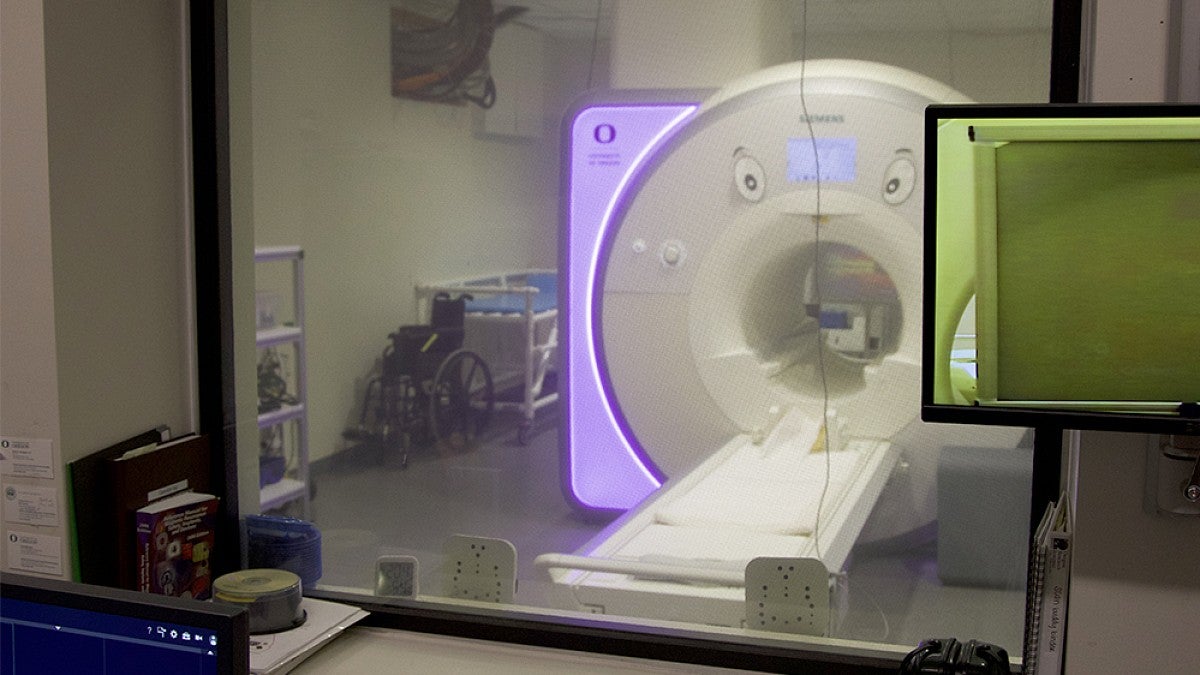
Experiential Learning | Research & Innovation | Community Impact | Career Preparation | Teaching Excellence | 21st Century Liberal Arts | Building Community | Good Vibes | CAS Spotlights | All Stories | Past Issues
Unlocking Memory
DECEMBER 16, 2024
As a kid, Brice Kuhl would try to memorize sequences of playing cards.
“I would come up with techniques to try and remember things,” said Kuhl, a professor of psychology in the College of Arts and Sciences.
His fascination with memorization led him to begin studying the psychology of memory. His lab at the University of Oregon investigates how our brains encode and decode memories, specifically in the hippocampus.
For his impressive work, Kuhl recently became the first faculty member to be awarded the Dr. Michael Posner Psychology Professorship in Cognition and Neuroscience.
"We are thrilled to award this professorship to Brice Kuhl, a highly accomplished researcher and leading expert in the science of memory formation and retrieval," says Chris Poulsen, Tykeson Dean of Arts and Sciences. "His groundbreaking work has further elevated the Psychology Department's contributions to cognition and neuroscience, areas in which the department has long excelled."
This brand-new professorship, awarded in honor of the Department of Psychology’s groundbreaking researcher Dr. Michael Posner, will help support Kuhl’s teaching, research and professional development.
"Brice is truly deserving of this professorship. I chose him as my graduate advisor because he exemplifies the kind of scientist and mentor I aspire to be,” said Lindsey Rait, a doctoral student in the Department of Psychology.
How experiences become memories
Much of Kuhl’s research focuses on the hippocampus, a key part of the brain that plays a role in memory, learning and spatial processing.
Located deep within the brain, near the temples and ears, it’s a tiny, seahorse-shaped structure that provides memory organization and storage.
By retrieving sensory information from other parts of the brain, the hippocampus acts as a command center to turn experiences into memories. When a memory is formed, the hippocampus strengthens the connections between neurons, essentially “wiring” the experience into the brain.
But since many of our experiences are very similar, the hippocampus must differentiate between distinct events.
“Every day you go to school and you’re in a similar place, interacting with similar people,” Kuhl said. “You might imagine those memories become kind of a blur, but it's important for our brain to try and keep these episodes distinct.”
To test how the hippocampus does this, Kuhl shows participants similar photos and videos, and their brain activity is recorded using functional magnetic resonance imaging (fMRI).
His research shows that when participants view two similar photos, the fMRI images reveal distinct neural activity. The hippocampus separates these memories by recoding them into distinct recollections.

Turning memory into data
For most people, it’s hard to imagine that their thoughts, dreams and memories can be transformed into definitive data.
However, neuroscientists like Kuhl use functional magnetic resonance imaging, an extremely powerful and expensive tool that allows researchers to track blood flow within the brain.
A single fMRI machine can cost upwards of $1 million. The UO is equipped with two of them.
“The fMRI is the third most expensive piece of equipment at the University of Oregon,” said Ali Burggren, director of the Lewis Center for Neuroimaging. “The second most expensive is the other one.”
Like a standard MRI typically found in hospitals and sports facilities, the fMRI uses magnetic and radio waves to create images of tissues and certain organs. However, an fMRI produces an indirect reading, showing how blood levels change throughout the brain.
“The logic is that when you use a specific part of your brain, the neurons deplete oxygen and then blood flows to that area to replenish the oxygen,” Kuhl said.
That blood flow is then measured through 3D images taken every couple of seconds by the fMRI, reflecting which locations in the brain are active.
These methods are evolving as the instruments become capable of giving increasingly precise readings.
—Brice Kuhl, professor of psychology
Unlocking the potential of memory research
Building on these discoveries, Kuhl is now exploring how the hippocampus retrieves these memories. His team is investigating when and why this memory retrieval occurs, including whether it’s prompted by emotional or sensory cues.
“Now we're kind of working on trying to figure out exactly when it happens and what triggers it,” Kuhl said.
Kuhl's findings could have broader implications beyond basic memory retrieval. Although his research is mostly on young, healthy adults, his work could impact people with cognitive diseases.
“I think, and hope, that this will also prove relevant for understanding diseases or disorders, even if it ends up being other researchers who look at those populations,” Kuhl said.
These insights could help inform future treatments for memory-related conditions like Alzheimer's and other neurodegenerative disorders.
Kuhl’s recent recognition through the Posner Professorship highlights both his impressive contributions to neuroscience and his role as an inspiring mentor to the next generation of scientists.
“Memories feel very abstract and intangible, but that was the real appeal of neuroimaging for me,” Kuhl said. “We can see these processes happen, identify the brain regions critical for forming memories, and observe how memories change over time. That’s what excites me most—using neuroimaging to make these things tangible.”
—By Leo Brown, College of Arts and Sciences
